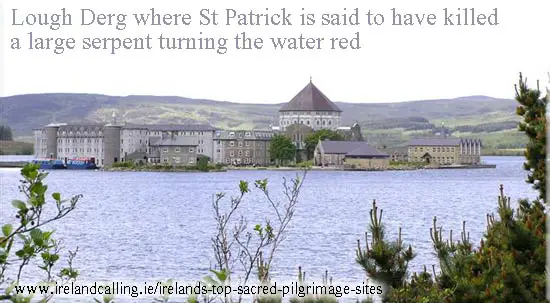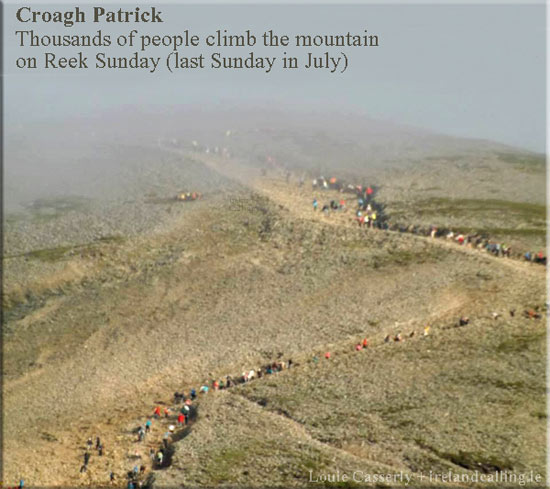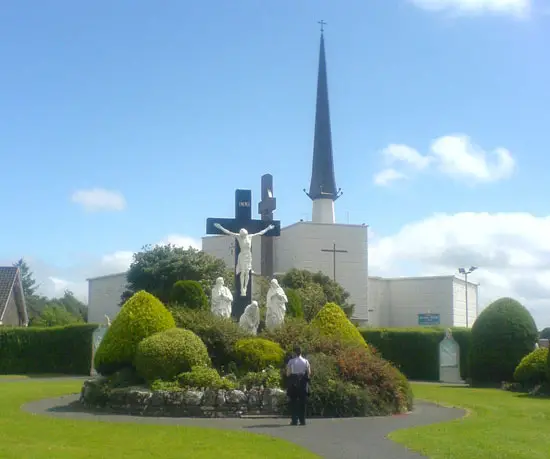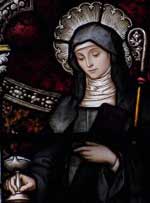For more than a thousand years Ireland has been one of the most deeply religious countries in the world. It has several pilgrimage sites – scenes of miracles or extraordinary events. Millions of people have visited these sacred places over the years.
For some it’s a personal journey of reflection and self-discovery, for others, it’s a way of honouring their religious beliefs. Others, just want to see what makes these sites such an irresistible magnet to so many across the world.
Here we list the top five pilgrimage sites in Ireland and offer a brief introduction into what makes them special.
Lough Derg – St Patrick killed a large serpent turning the water red
Lough Derg is the most popular pilgrimage site in Ireland, both for tourists and natives. It is a large lake in Co Donegal. One of the islands in the middle of Lough Derg, Station Island, is reportedly where St Patrick killed a large serpent turning the water red.

”Just back today from my first 3 day Pilgrimage…what a fantastic experience!! I feel refreshed & renewed! Truly wonderful time. I’ll definitely be back!”
Jo, 2012 pilgrim
St Patrick was worried that his followers would not believe in God without physical proof. The legend goes that God revealed a pit on the island that would make people believe his word. St Patrick called the pit purgatory and the pilgrimage is often referred to as St Patrick’s Purgatory.
Thousands flock to the lake, to spend three days in spiritual retreat each year. The pilgrims are ferried across on the Friday afternoon and assigned a dormitory for their stay. Their time is spent walking around the island with regular intervals for prayer and reflection. Only one meal a day is granted, of dry toast and black tea or coffee.
The first night is spent holding a vigil, and the second the pilgrims are allowed to rest in their dormitories. They return back to the mainland on the Sunday, but continue to fast until midnight.
Organisers of the pilgrimage welcome people of any or no faith, with the only requirements being that they are over the age of 15, in good health and able to walk and kneel freely. Several notable people have taken part in this pilgrimage including Nobel Prize winning poet Seamus Heaney and former Irish President, Mary McAleese.
Croagh Patrick – St Patrick banished snakes from Ireland forever
Croagh Patrick is another major pilgrimage site in Ireland. It is a large mountain located in County Mayo, often referred to as the Holy Mountain.

Thousands of people climb Croagh Patrick on Reek Sunday each year, the last Sunday in July. The date was significant to the ancient Celts as the festival of Lughnasadh, the summer harvest and the halfway point between the Summer Solstice and the Autumn Equinox.
St Patrick spent forty days fasting on the mountain during a pilgrimage of his own. The legend goes that it was from the top of the hill that St Patrick banished snakes from Ireland forever. Many pilgrims now remove their shoes and socks to follow in the footsteps of St Patrick. Once the pilgrims have reached the summit, they can attend mass and give confession at a small chapel that stands on top of the mountain. Others prefer to simply take in the spectacular view in a private moment of reflection.
Knock Shrine – one of Europe’s main shrines to the Virgin Mary
More than one and a half million people visit Knock in County Mayo every year. In the year 1879, the images of the Virgin Mary, St Joseph and St John appeared by the parish church. All three were dressed in white robes and it appeared that St John was preaching with the Virgin Mary and St Joseph bowing their heads in prayer.

The Apparition was witnessed by fifteen people, both male and female aged between six years and seventy five years old. The witnesses stood in the pouring rain for more than two hours watching the scene.
The site has since become a place of worship for Catholics from all around the world. Pope John Paul II visited Knock in 1979 to mark the centenary of the sighting. There is a cathedral now built on the site that has a capacity of 10,000 and the town has its own airport to cater for the vast number of visiting pilgrims. Knock is now one of Europe’s main Marian Shrines, dedicated to the Virgin Mary.
Faughart – the birthplace of St Brigid

Faughart is a town in County Louth which is the birthplace of St Brigid, one of the patron saints of Ireland. St Brigid’s Stone, Brigid’s Pillar and Brigid’s Well are just a few of the landmarks built in Faughart as a tribute to the saint. Thousands of tourists visit the town each year to see the birthplace of St Brigid, particularly on her feast day, 1st February.
The town is also of historical interest as the place where Edward Bruce was killed in battle. Edward was the brother of Robert the Bruce, the one-time King of Scotland. Edward claimed the territory of Ireland for himself and became High King of Ireland. However, he was killed by his rival Sir John de Bermingham in the Battle of Faughart. He is buried in the town’s cemetery.
Monasterboice – St Buithe ascended into heaven

Monasterboice in County Louth is a hugely popular site for pilgrims visiting Ireland. It is the remains of an ancient monastery dating back to the 5th century.
It is named after St Buithe, who founded the monastery. Legend has it, that he ascended into heaven via a ladder that was lowered down onto the site. The name Monasterboice is the anglicisation of the ‘minister of Buithe’.
The main attraction at Monasterboice is the ancient High Cross. It stands five and a half metres high and is considered to be the finest example of a high cross in the country. There is also a large tower on the site which would have been used as a hideaway for the monks when Viking looters were approaching. It also served as a beacon for pilgrims visiting the holy site. It is around 35 metres tall, but visitors are not permitted to go inside.
The monastery burned down in 1097. There are two church houses on the site that were built in the 14th century. The High Cross features carvings from both the Old and New Testaments. It is flanked by two smaller crosses, but both have been severely damaged over the centuries.